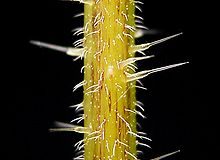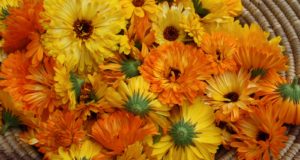
Stargardt’s disease, also known as Stargardt’s macular dystrophy and fundus flavimaculatus, is the most common form of inherited juvenile macular degeneration. This disease usually begins in late childhood and gradually leads to legal blindness.
The Ayurvedic treatment of Stargardt’s disease is aimed at preventing or delaying the pathophysiological process of this disease. A gradual buildup of lipid (fat) deposits in the Retinal Pigment Epithelium (RPE) cuts off the nourishment which the RPE provides to the photoreceptor cells in the macula part of the retina. This causes a gradual degeneration of the photoreceptor cells, leading to loss of vision. Ayurvedic medicines like Arogya-Vardhini, Medohar-Guggulu, Triphala-Guggulu, Punarnavadi-Guggulu and Tryushanadi-Loh are used to prevent and reduce the fat deposition which is basically responsible for this disease. Herbal medicines like Triphala (Three fruits), Trikatu (Three pungent herbs), Amalaki (Emblica officinalis), Haritaki (Terminalia chebula), Kutki (Picrorrhiza kurroa), Punarnava (Boerhaavia diffusa), Guggulu (Commiphora mukul), Pippali (Piper longum) and Marich (Piper nigrum) can also be used for this purpose.
Medicines like Punarnavadi-Qadha, Gokshuradi-Guggulu, Punarnava, Gokshur (Tribulus terrestris), Saariva (Hemidesmus indicus) and Musta (Cyperus rotundus) are used to help in speedy removal of the fat deposits from the RPE. Medicines like Apamarga (Achyranthus aspera), Deodar (Cedrus deodara), Ikshumool (Saceharum officinarum), Patol (Tricosanthe dioica) and Patha (Cissampelos pareira) can also be used for this purpose.
In addition, medicines are given to improve the nourishment to the photoreceptor cells in the macula and prevent or reduce the degeneration of these cells. Medicines like Mahamanjishthadi-Qadha, Saarivasav, Tapyadi-Loh, Ekang-Veer-Ras, Bruhat-Vat-Chintamani, Abhrak-Bhasma, Tamra-Bhasma and Trivang-Bhasma can be used for this purpose. Herbal medicines like Shatavari (Asparagus racemosus), Ashwagandha (Withania somnifera), Bala (Sida cordifolia), Naagbala (Grewia hirsuta), Tulsi (Ocimum sanctum), Guduchi (Tinospora cordifolia), Amalaki, Saariva, Manjishtha (Rubia cordifolia), Chirayta (Swertia chirata), Chandan (Santalum album) and Vishwa (Zinziber officinalis) can also be used for this purpose.
A special Panchkarma procedure called “Netra-Tarpan” is believed to have potential for benefit in the long-term treatment of Stargardt’s disease. In this procedure, a paste is applied around the eyes, and a lukewarm solution of medicated ghee or oil like Triphala-Ghrut, Shatavari-Ghrut or Mahanarayan-Oil is poured inside, so that the entire eye is immersed in the medicine. After a pre-determined period, the liquid is drained, the paste is removed, and the eyes are gently wiped clean.
It should be remembered that this disease process is often quite slow and eludes diagnosis for several years. Treatment needs to be taken regularly for several years in order to prevent loss of vision. Avoiding exposure to bright light and the use of ultraviolet protective sunglasses can retard the progress of this disease. All children affected with this condition should be under the regular care and supervision of an Ophthalmologist.

Source by Abdulmubeen Mundewadi
 Vitamin Agent The Health & Naturalistic Source
Vitamin Agent The Health & Naturalistic Source





